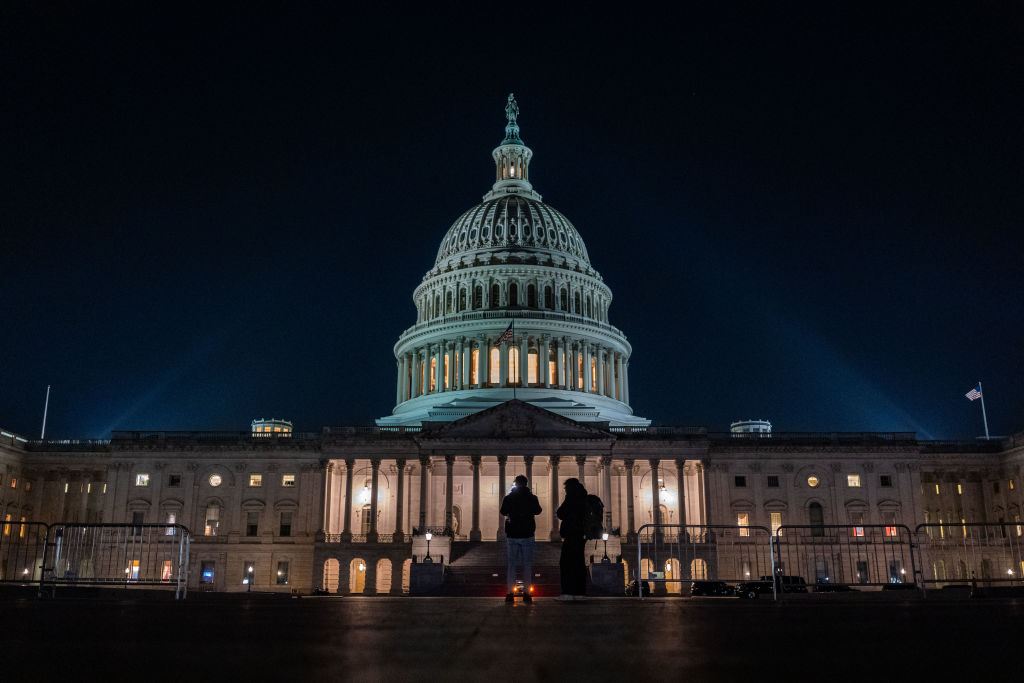Editor's Note: Follow live coverage of the pandas' arrival to D.C. here.
Panda-monium is back! ... Or at least, on the way. A pair of 3-year-old giant pandas have begun their journey to the National Zoo in Washington, D.C., according to officials from the China Wildlife Conservation Society and Chinese state-owned media.
Bao Li and Qing Bao will arrive nearly a year after the zoo's last three pandas left for China, leaving D.C. without pandas for the first time in more than two decades.
At the time, it wasn't clear when — or if — D.C. would ever again be home to giant pandas, but it turned out we wouldn't have to wait all that long. In May, officials announced that China planned to send a pair of young pandas, male Bao Li and female Qing Bao. But at the time, they didn't provide an official arrival date.
Get top local stories in San Diego delivered to you every morning. >Sign up for NBC San Diego's News Headlines newsletter.
On Sunday night, according to Chinese state-owned media, Bao Li and Qing Bao left the Dujiangyan base of the China Conservation and Research Center for the Giant Panda in a special vehicle en route to Chengdu Shuangliu International Airport. They were set to then board a special flight to the D.C. area on Monday, according to the Chinese state-owned Xinhua News Agency, with a translation checked by NBC's Peter Guo.
The FedEx Panda Express is carrying the pandas to Dulles International Airport. According to flight trackers, they departed a refueling stop in Alaska early Tuesday, and are expected to touch down in Virginia later in the morning. We’ll send a push alert in our app when live coverage begins.
A spokesperson for the National Zoo declined to comment earlier Monday, but the zoo later announced on social media, "Something giant is coming to Washington, D.C. via the @FedEx Panda Express! The Zoo will be closed to the public tomorrow, Oct. 15. For the safety of the pandas and staff, we will not disclose any additional timing."
U.S. & World
The new bundles of joy will come to the National Zoo under a 10-year breeding and research agreement between China and the U.S., the zoo has said.
Meet DC's newest future residents: Giant pandas Bao Li and Qing Bao
Although the two were born in China, Bao Li (BOW-lee) has some major D.C. roots: He is the son of Bao Bao, who was born at the National Zoo in 2013. That makes him the grandchild of Mei Xiang and Tian Tian, who lived at the Zoo for about 23 years before moving to China last November with their youngest offspring.
“The pandas' arrival is not just an exciting event, but it’s proof positive of the success of our giant panda program,” National Zoo director Brandie Smith said when the plan was announced in May.

Bao Li, whose name means "treasure" and "energetic" in Mandarin Chinese, was born Aug. 4, 2021, and lived at the Shenshuping Base in Wolong, China.
“Bao Li is just as handsome as his uncles, Tai Shan and Xiao Qi Ji,” Chinese ambassador Xie Feng said at a press conference in May, referring to two more of Mei Xiang and Tian Tian's offspring, who were also born at the National Zoo. “I believe he is also excited for the upcoming trip from his hometown in Sichuan to D.C. to see the place where his family lived and get to know the friends here.”
As for Qing Bao (ching-BOW): “She is a star,” Xie said back in May. Qing Bao was made the ambassador of the ninth World Wildlife Day when she was a year old.
Qing Bao, whose name means "green" and "treasure," was born Sept. 12, 2021, and lived at the Dujiangyan Base in Sichuan.

FedEx is flying the new pair to the United States via its "Panda Express" service.
In response to the National Zoo's post about the "giant" delivery on X, the @FedEx account responded, "We are so excited!"
The animals are expected to be quarantined for at least 30 days, and then allowed to settle in for a few weeks before the newly revamped panda exhibit opens to the public at the National Zoo.
“The public debut date will be announced as soon as the animal care team feels the bears are ready to meet visitors,” zoo officials previously said.
Under the new agreement, the National Zoo will pay $1 million per year to the China Wildlife Conservation Association to “support research and conservation efforts in China,” the zoo has said. That money does not come from federal funding, according to the zoo.
In May, the National Zoo said it was looking to raise $25 million to pay for renovations to the panda exhibit, upgrade the Giant Panda Cam, pay for costs of operating the panda exhibit and to support conservation efforts. It announced a $10 million donation from David Rubenstein last month.
The zoo said crews were also installing new climbing structures, water features and rockwork for exercise and play. A new ventilation system will improve air quality and temperature control, and the zoo also upgraded its smoke evacuation network to keep the pandas safer in an emergency, officials said.
China will retain ownership of the pandas, and any cubs must be returned to China by age 4 — similar to the previous agreement involving Mei Xiang, Tian Tian and their offspring.
The Chinese ambassador hopes the agreement will bring joy to a new generation of families, he said in May.
“Over the past five decades, pandas have held a special place in the childhood memories of numerous Americans. Today, many of those happy kids have become grandpas and grandmas, dads and moms themselves. They look forward to taking their kids to the zoo to tell their stories with pandas and start new ones for their little boys and girls,” Xie said.
Giant pandas were a staple at D.C.’s National Zoo for over 50 years
The National Zoo’s longstanding resident pandas, Tian Tian and Mei Xiang, departed D.C. last fall, along with their youngest offspring, Xiao Qi Ji, who was born at the zoo in 2020. The three went to new homes in the China Wildlife Conservation Association, leaving the National Zoo's giant panda habitat vacant for the first time in decades.
Pandas first arrived at the National Zoo in the 1970s and evolved into D.C.'s unofficial mascots. The black-and-white bears appeared on Metro farecards and street signs and as statues around the District.
The panda conservation program flourished after Tian Tian and Mei Xiang arrived in D.C. in 2000. Mei Xiang gave birth to four surviving cubs. Tai Shan was born in 2005, but his birth was followed by a long dry spell before a crushing blow: A cub born in 2012 lived for just a week.
The following August, we got both hope and sadness: A squirming newborn arrived, along with a stillborn twin. But as D.C. held its collective breath, the living cub thrived. Bao Bao squawked adorably during vet exams captured on video, tumbled (safely — whew!) down a pile of rocks, and even prolonged the excitement when the National Zoo's webcam went dark during a government shutdown. When the cams went live again, she had a new surprise: Her eyes had opened.

Maybe it was just us, but Bao Bao always seemed to know when to drum up some attention. She was the source of some adorable headlines. (Case in point: Mei Xiang Cuddles Cub Rather Than Snacking.) There was a paternity drama — was her biological father the zoo's own Tian Tian, or another male panda whose sperm was also used in a fertility attempt? (Verdict: Tian Tian IS the father.) And just before Christmas 2014, Bao Bao spent 24 hours in a tree, diverting focus from holiday celebrations before she finally climbed down.
But after becoming a big sister, Bao Bao was ready to strike out on her own. She moved to China — taking a similar FedEx journey as the rest of her family members ultimately did — and became a mom herself.
Bao Bao's birth at the National Zoo was followed by two surviving younger brothers: Bei Bei in 2017 (who was born with a twin who died days after birth) and Xiao Ji Qi, the first panda in the U.S. born after his mother was artificially inseminated with frozen, instead of fresh, semen.
The agreement to keep Tian Tian and Mei Xiang was extended several times. The panda program has always served as a gesture of friendship and a sort of soft diplomacy between China and the United States. The pullback of pandas from the National Zoo and other zoos in the United States initially sparked some concern. Currently, there are only four pandas in the country – all at Atlanta’s zoo.
But in February, news that China would send a new pair of giant pandas to the San Diego Zoo signaled the return of panda diplomacy. The pair arrived in June and, after a period of settling into their new habitat, made their public debut in San Diego last month.
Despite the links with U.S.-China diplomacy, negotiations regarding pandas are conducted among researchers and aren't based in politics, Smith told News4 last summer.
"We're a bunch of scientists; we're a bunch of animal people," Smith said. "This is not a political conversation. This is absolutely a conversation between colleagues talking about, what's best for the overall program, and also, what can be best for individual animals?"



